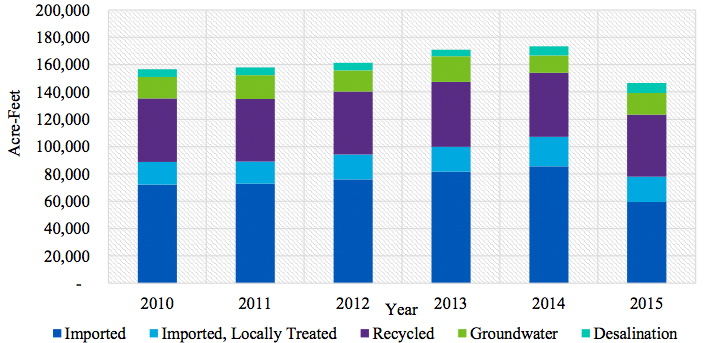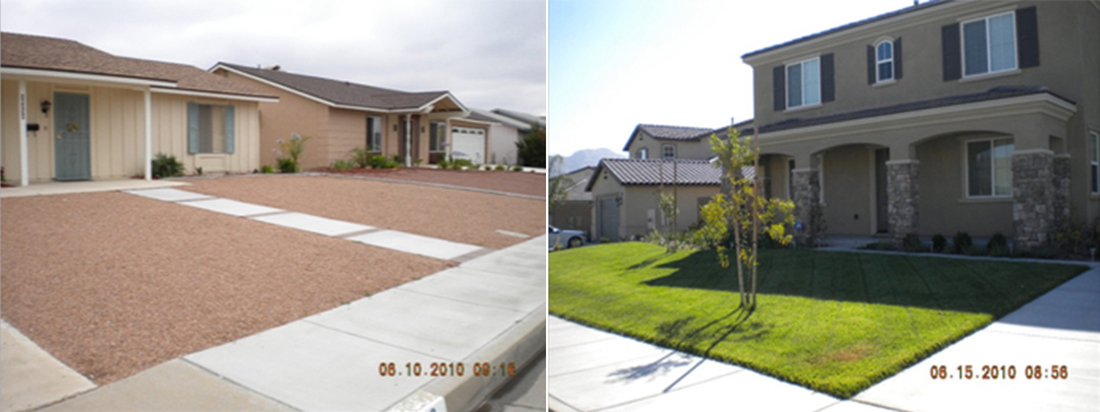Eastern Municipal Water District
Implementing Rates First for High Demand Customer Classes
EMWD is a wholesale and retail water supplier located in Riverside County with a 542 square mile service area and service to a population of 785,000 people. EMWD has 137,000 retail water accounts and 225,000 wastewater accounts. The water supply portfolio includes groundwater, desalinated groundwater, recycled water, and imported water from the Metropolitan Water District of Southern California. The graph below shows volume by water supply source. EMWD is in a growing region and is currently about 40% of build-out.

EMWD has a diverse customer base that includes a large population of retired households and many young families moving from adjacent counties in search of single family homes at a lower cost. The resulting water use this range of customers exhibits (e.g., the pictures below illustrate the diversity of landscapes within EMWD) caused EMWD to look for a method to achieve equitable water use efficiency. For EMWD, BBRs have lowered water demand by setting an efficiency standard and sending a strong pricing signal to those using water inefficiently.

The BBRs were implemented in 2009 as an equitable method of promoting conservation while still providing revenue stability. At the time, residential customers accounted for 80% and dedicated landscape accounts accounted for 12% of EMWD’s potable retail demand, so it was decided that those customer groups would be transitioned to BBRs first.
Budgets were based on 60 gallons per capita per day for indoor use and a% of ET over the irrigated area for outdoor use. Irrigated areas were initially estimated based on parcel size. Over time, most of the irrigated area has been individually measured. The percentage of ET depends on the date the meter was initially installed and new homes receive a low ET percentage based on the Model Water Landscape Ordinance in place at the time of construction. For more information on EMWD and the Model Water Landscape Ordinance,
see Eastern Municipal Water District in Setting a Water Budget »
After implementation, EMWD saw a significant drop in water demand (shown in the graph below by the decrease in GPCD after BBR implementation). Weather, economic and other forces impacting demand at the same time make it difficult to attribute the drop in demand to any one source. EMWD partnered with the University of California, Riverside (UCR) to do a study on the effectiveness of its BBR rate structure. The result of the study was a 15% saving over time by residential customers. The second figure below shows the UCR results for household demand as the BBR observed demand versus the uniform rate predicted demand on a 12 month moving average. EMWD is currently completing a new rate study and considering additional revisions to its BBR including budgets for all customers and reduced allocations.

